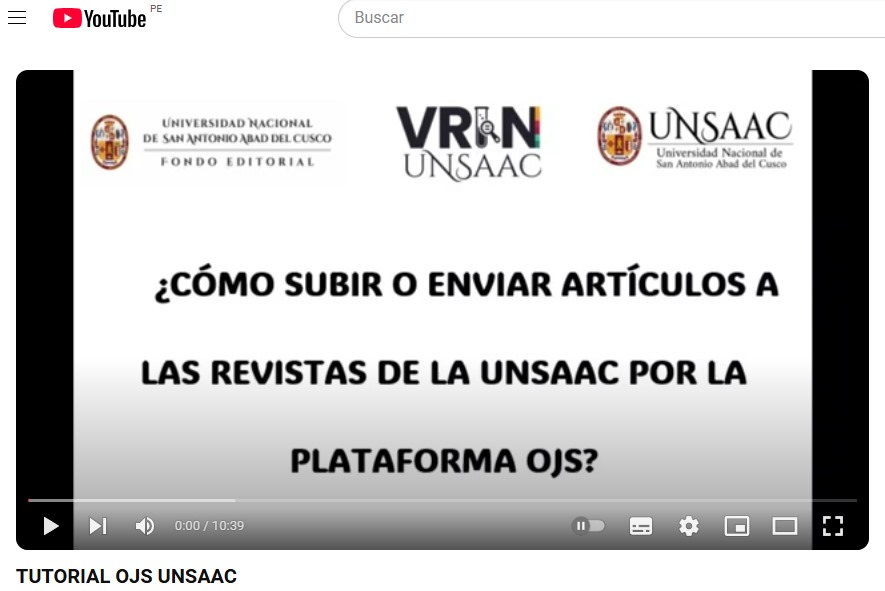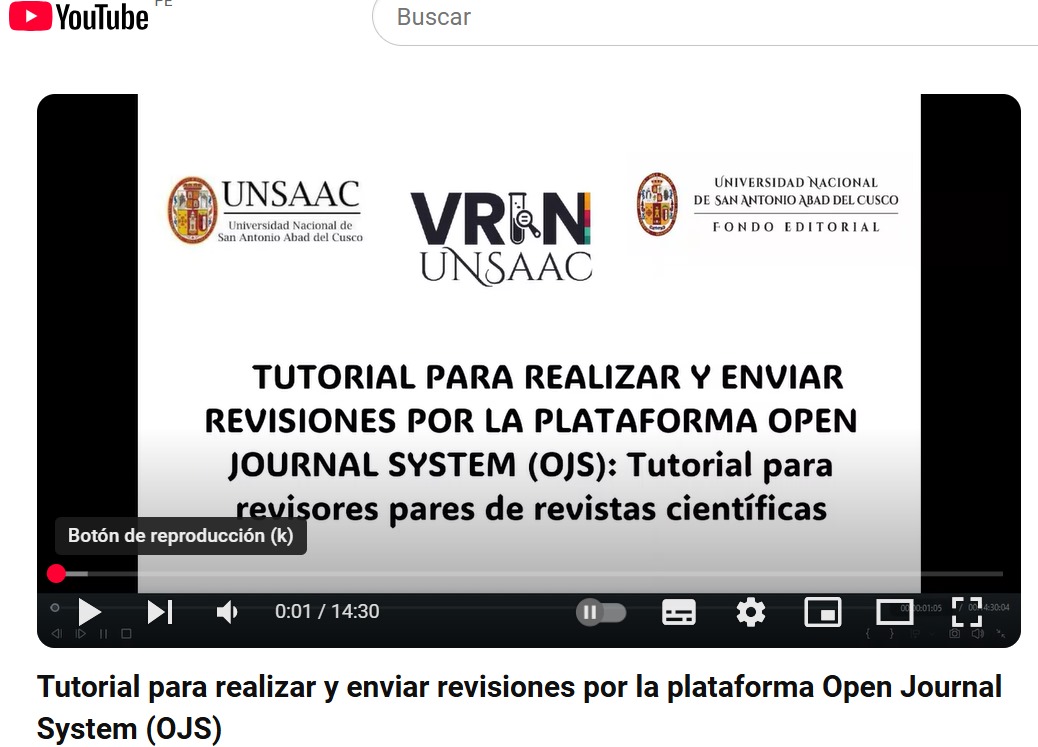Meta-análisis de la resistencia a la compresión no confinada de suelos estabilizados con Xanthan
DOI:
https://doi.org/10.51343/racs.v7i2.1523Palabras clave:
Estabilización de suelos, compresión no confinada, goma XanthanResumen
La estabilización del suelo se orienta a la mejora de las características de suelos con limitaciones técnicas mediante la incorporación de materiales adicionales, generando así suelos optimizados para soportar cargas
estructurales y prevenir daños geotécnicos. La bioestabilización emplea métodos biológicos como una opción alternativa al uso de cemento, cuyo empleo trae graves consecuencias ambientales. El polisacárido extracelular bacteriano denominado goma Xanthan ha sido objeto de estudio como estabilizante del suelo. No obstante, la diversidad de resultados presentes en la literatura científica subraya la necesidad de una
consolidación de los efectos observados sobre la propiedad geotécnica de resistencia a la compresión simple. En el presente estudio, se consolidaron los valores de compresión simple documentados en artículos indexados mediane un metaanálisis de 27 artículos. Los principales hallazgos incluyen el desarrollo de una superficie de respuesta para los valores de compresión simple en distintos tipos de suelos, considerando variados tiempos de curado y diferentes dosificaciones de goma Xanthan. Se concluye que la cantidad de goma Xanthan aplicada al suelo puede clasificarse en micro, meso y macro dosis. Asimismo, los períodos de curado necesarios para alcanzar mejoras en la resistencia oscilan desde unas pocas horas hasta varios meses. La efectividad de la goma Xanthan para incrementar la resistencia a la compresión simple está fuertemente influenciada por el tipo de suelo; se ha determinado que la resistencia puede cuadruplicarse en las arcillas. Finalmente, se han identificado las principales lagunas de conocimiento vinculadas a la estabilización de suelos mediante goma Xanthan.
Descargas
Citas
Adroit. (2023). Xanthan gum market application and region global forecast 2022to 2031.https://www.adroitmarketresearch.com/industry-reports/xanthan-gum-market
Alibaba. (2023). Xanthan gum - Xanthan gum manufacturers, suppliers and exporters on Alibaba.com food additives.https://www.alibaba.com/trade/search?fsb=yyIndexArea=product_enyCatId=ytab=allySearchText=xanthan+gum
Alshkane, Y., Rashed, K., y Daoud, H. (2020). Unconfined compressive strength (UCS) and compressibility indices predictions from dynamic cone penetrometer index (DCP) for cohesive soil in Kurdistan Region/Iraq. Geotechnical and Geological Engineering, 38(5), 3683–3695.
Anandha, S., y Sujatha, E. R. (2021). Compaction and permeability characteristics of biopolymer-treated soil. Lecture Notes in Civil Engineering, 79. https://doi.org/10.1007/978-981-15-5101-7_11
Arbulu-Jurado, C. (2023, 30 de enero). Meta-analysis of the unconfined compressive strength of soils with Xanthan - Database. https://doi.org/10.17605/OSF.IO/5QJ9G
Ashby, M. (2015). Materials and sustainable development.https://doi.org/10.1007/s11741-998-0069-x
Avery, M. R., Burkholder, L. A., y Gruenenfelder, M. A. (1986). Use of crosslinked Xanthan gels in actual profile modification field projects. Society of Petroleum Engineers of AIME, (Paper) SPE, 2. https://doi.org/10.2118/14114-ms
Ayeldeen, M., Negm, A., El-Sawwaf, M., y Kitazume, M. (2017). Enhancing mechanical behaviors of collapsible soil using two biopolymers. Journal of Rock Mechanics and Geotechnical Engineering, 9(2). https://doi.org/10.1016/j.jrmge.2016.11.007
Bagheri, P., Gratchev, I., y Rybachuk, M. (2023). Effects of Xanthan gum biopolymer on soil mechanical properties. Applied Sciences, 13(2), 887. https://doi.org/10.3390/app13020887
Cabalar, A. F., Awraheem, M. H., y Khalaf, M. M. (2018). Geotechnical properties of a low-plasticity clay with biopolymer. Journal of Materials in Civil Engineering, 30(8). https://doi.org/10.1061/(asce)mt.1943-5533.0002380
Chalmers, I., y Altman, D. G. (1995). Systematic reviews. BMJ Publishing Group.
Chang, I., Im, J., y Cho, G. C. (2016). Introduction of microbial biopolymers in soil treatment for future environmentally-friendly and sustainable geotechnical engineering. Sustainability (Switzerland), 8(3). https://doi.org/10.3390/su8030251
Chang, I., Im, J., Prasidhi, A. K., y Cho, G. C. (2015). Effects of Xanthan gum biopolymer on soil strengthening. Construction and Building Materials, 74. https://doi.org/10.1016/j.conbuildmat.2014.10.026
Chen, C., Wei, K., Gu, J., Huang, X., Dai, X., y Liu, Q. (2022). Combined effect of biopolymer and fiber inclusions on unconfined compressive strength of soft soil. Polymers, 14(4). https://doi.org/10.3390/polym14040787
Chen, Y. (2019). Hydrogels based on natural polymers.https://doi.org/10.1016/C2018-0-00171-1
Choi, S. G., Chang, I., Lee, M., Lee, J. H., Han, J. T., y Kwon, T. H. (2020). Review on geotechnical engineering properties of sands treated by microbially induced calcium carbonate precipitation (MICP) and biopolymers. Construction and Building Materials, 246.https://doi.org/10.1016/j.conbuildmat.2020.118415
Das, B. M. (2017). Principles of geotechnical engineering. Cengage Learning.
Elkafoury, A., y Azzam, W. (2021). Utilize Xanthan gum for enhancing CBR value of used cooking oil-contaminated fine sand subgrade soil for pavement structures. Innovative Infrastructure Solutions, 6(1). https://doi.org/10.1007/s41062-020-00389-6
Fatehi, H., Ong, D., Yu, J., y Chang, I. (2021). Biopolymers as green binders for soil improvement in geotechnical applications: A review. Geosciences (Switzerland), 11(7). https://doi.org/10.3390/geosciences11070291
Ghasemzadeh, H., Mehrpajouh, A., y Pishvaei, M. (2022). Compressive strength of acrylic polymer-stabilized kaolinite clay modified with different additives. ACS Omega, 7(23), 19204–19215. https://doi.org/10.1021/acsomega.2c00236
Ghasemzadeh, H., y Modiri, F. (2020). Application of novel Persian gum hydrocolloid in soil stabilization. Carbohydrate Polymers, 246. https://doi.org/10.1016/j.carbpol.2020.116639
Ghasemzadeh, H., Modiri, F., y Darvishan, E. (2022). A novel clean biopolymer-based additive to improve mechanical and microstructural properties of clayey soil. Clean Technologies and Environmental Policy, 24(3). https://doi.org/10.1007/s10098-021-02234-5
Hamza, M., Nie, Z., Aziz, M., Ijaz, N., Ijaz, Z. ur., y Rehman, Z. ur. (2022). Strengthening potential of xanthan gum biopolymer in stabilizing weak subgrade soil. Clean Technologies and Environmental Policy, 24(9), 2719–2738. https://doi.org/10.1007/s10098-022-02347-5
Hamza, M., Zhihong, N., Aziz, M., Ijaz, N., Ameer, M., y Ijaz, Z. (2022). Geotechnical properties of problematic expansive subgrade stabilized with xanthan gum biopolymer. Road Materials and Pavement Design, 1–15. https://doi.org/10.1080/14680629.2022.2092027
Huang, J., Kogbara, R. B., Hariharan, N., Masad, E. A., y Little, D. N. (2021). A state-of-the-art review of polymers used in soil stabilization. Construction and Building Materials, 305. https://doi.org/10.1016/j.conbuildmat.2021.124685
IBISWorld. (2023). Price of cement - United States.https://www.ibisworld.com/us/bed/price-of-cement/190/
Jang, J., y Jia, P. (2020). A review of the application of biopolymers on geotechnical engineering and the strengthening mechanisms between typical biopolymers and soils. Advances in Materials Science and Engineering, 2020.https://doi.org/10.1155/2020/1465709
Joga, J. R., y Varaprasad, B. J. S. (2020). Effect of xanthan gum biopolymer on dispersive properties of soils. World Journal of Engineering, 17(4). https://doi.org/10.1108/WJE-05-2020-0152
Joga, J. R., y Varaprasad, B. J. S. (2019). Sustainable improvement of expansive clays using Xanthan gum as a biopolymer. Civil Engineering Journal, 5(9). https://doi.org/10.28991/cej-2019-03091380
Kang, X., Bate, B., Chen, R.-P., Yang, W., y Wang, F. (2019). Physicochemical and mechanical properties of polymer-amended kaolinite and fly ash–kaolinite mixtures. Journal of Materials in Civil Engineering, 31(6). https://doi.org/10.1061/(asce)mt.1943-5533.0002705
Kavazanjian, E., Jr., y Matasovic, N. (2020). Geotechnical engineering: Principles and practices of soil mechanics and foundation engineering. John Wiley y Sons.
Khosravi, M., Tabarsa, A. R., Osouli, A., y Latifi, N. (2020). A biopolymer-based waterproofing mortar for irrigation channel joints. https://doi.org/10.1061/9780784482834.018
Kupolati, W. K., Sadiku, E. R., Frattari, A., Adeboje, A. O., Kambole, C., Mojapelo,K. S., Maite, M. R., Motsilanyane, N., Bezuidenhout, W., Eze, A. A., Ibrahim, I. D., Labana, B. J., Adegbola, T. A., Snyman, J., Moloisane, R. J.,y Berkers, R. F. A. (2019). Biopolymers and nanocomposites in civil engineering applications.https://doi.org/10.1007/978-981-13-8063-1_15
Kwon, Y. M., Chang, I., Lee, M., y Cho, G. C. (2019). Geotechnical engineering behavior of biopolymer-treated soft marine soil. Geomechanics and Engineering, 17(5). https://doi.org/10.12989/gae.2019.17.5.453
Latifi, N., Horpibulsuk, S., Meehan, C. L., Abd Majid, M. Z., Tahir, M. M., y Mohamad, E. T. (2017). Improvement of problematic soils with biopolymer—An environmentally friendly soil stabilizer. Journal of Materials in Civil Engineering, 29(2). https://doi.org/10.1061/(asce)mt.1943-5533.0001706
Latifi, N., Horpibulsuk, S., Meehan, C. L., Majid, M. Z. A., y Rashid, A. S. A. (2016). Xanthan gum biopolymer: An eco-friendly additive for stabilization of tropical organic peat. Environmental Earth Sciences, 75(9). https://doi.org/10.1007/s12665-016-5643-0
Lee, M., Kwon, Y.-M., Park, D.-Y., Chang, I., y Cho, G.-C. (2022). Durability and strength degradation of xanthan gum-based biopolymer treated soil subjected to severe weathering cycles. Scientific Reports, 12(1), 19453. https://doi.org/10.1038/s41598-022-23823-4
Lee, S., Chang, I., Chung, M. K., Kim, Y., y Kee, J. (2017). Geotechnical shear behavior of xanthan gum biopolymer treated sand from direct shear testing. Geomechanics and Engineering, 12(5). https://doi.org/10.12989/gae.2017.12.5.831
Lee, S., Chung, M., Park, H. M., Song, K.-I., y Chang, I. (2019). Xanthan gum biopolymer as soil-stabilization binder for road construction using local soil in Sri Lanka. Journal of Materials in Civil Engineering, 31(11). https://doi.org/10.1061/(asce)mt.1943-5533.0002909
Mendonça, A., Morais, P. V., Pires, A. C., Chung, A. P., y Oliveira, P. V. (2021). A review on the importance of microbial biopolymers such as xanthan gum to improve soil properties. Applied Sciences (Switzerland), 11(1). https://doi.org/10.3390/app11010170
Moghal, A. A. B., y Vydehi, K. V. (2021). State-of-the-art review on efficacy of xanthan gum and guar gum inclusion on the engineering behavior of soils. Innovative Infrastructure Solutions, 6(2). https://doi.org/10.1007/s41062-021-00462-8
MTC. (2013). Manual de carreteras. Especificaciones técnicas generales para construcción (EG-2013).
Muguda, S., Booth, S., Hughes, P. N., Augarde, C. E., Perlot, C., Bruno, A. W., y Gallipoli, D. (2017). Mechanical properties of biopolymer-stabilised soil-based construction materials. Geotechnique Letters, 7(4). https://doi.org/10.1680/jgele.17.00081
Ni, J., Hao, G. L., Chen, J. Q., Ma, L., y Geng, X. Y. (2021). The optimisation analysis of sand-clay mixtures stabilised with xanthan gum biopolymers. Sustainability (Switzerland), 13(7). https://doi.org/10.3390/su13073732
Ni, J., Li, S. S., Ma, y Geng, X. (2020). Performance of soils enhanced with eco-friendly biopolymers in unconfined compression strength tests and fatigue loading tests. Construction and Building Materials, 263. https://doi.org/10.1016/j.conbuildmat.2020.120039
Patole, A. (2021). Principles and practice of systematic reviews and meta-analysis. https://doi.org/10.1007/978-3-030-71921-0
Puzrin, A. (2012). Constitutive modelling in geomechanics: Introduction. https://doi.org/10.1007/978-3-642-27395-7
Ramachandran, A., Ghalib, M., Dhami, N., Cheema, D., y Mukherjee, A. (2022). Multi-functional performance of biopolymers and biocement in stabilisation of road bases. Proceedings of the Institution of Civil Engineers - Construction Materials, 0(0), 1–15. https://doi.org/10.1680/jcoma.21.00063
Ramdas, V., Mandree, P., Mgangira, M., Mukaratirwa, S., Lalloo, R., y Ramchuran, S. (2021). Review of current and future bio-based stabilisation products (enzymatic and polymeric) for road construction materials. Transportation Geotechnics, 27.https://doi.org/10.1016/j.trgeo.2020.100458
Rashid, A., Latifi, N., Meehan, C., y Manahiloh, K. (2017). Sustainable improvement of tropical residual soil using an environmentally friendly additive. Geotechnical and Geological Engineering, 35(6). https://doi.org/10.1007/s10706-017-0265-1
Rashid, A., Tabatabaei, S., Horpibulsuk, S., Mohd Yunus, N., y Hassan, W. (2019). Shear strength improvement of lateritic soil stabilized by biopolymer based stabilizer. Geotechnical and Geological Engineering, 37(6).https://doi.org/10.1007/s10706-019-00944-8
Reddy, N., Nongmaithem, R., Basu, D., y Rao, B. (2020). Application of biopolymers for improving the strength characteristics of red mud waste. Environmental Geotechnics, 9(6). https://doi.org/10.1680/jenge.19.00018
Seo, S., Lee, M., Im, J., Kwon, Y., Chung, M., Cho, G., y Chang, I. (2021). Site application of biopolymer-based soil treatment (BPST) for slope surface protection: In-situ wet-spraying method and strengthening effect verification. Construction and Building Materials, 307.https://doi.org/10.1016/j.conbuildmat.2021.124983
Singh, S., y Das, R. (2020). Geo-engineering properties of expansive soil treated with xanthan gum biopolymer. Geomechanics and Geoengineering, 15(2).https://doi.org/10.1080/17486025.2019.1632495
Singh, S., Das, R., y Seth, D. (2021). Plasticity and strength characteristics of expansive soil treated with Xanthan gum biopolymer. Lecture Notes in Civil Engineering, 88.https://doi.org/10.1007/978-981-15-6237-2_54
Stanford Center for Earth Resources Forecasting. (2023). Software. https://scerf.stanford.edu/resources/software
Soldo, A., y Miletić, M. (2019). Study on shear strength of Xanthan gum-amended soil. Sustainability (Switzerland), 11(21). https://doi.org/10.3390/su11216142
Soldo, A., Miletić, M., y Auad, M. (2020). Biopolymers as a sustainable solution for the enhancement of soil mechanical properties. Scientific Reports, 10(1). https://doi.org/10.1038/s41598-019-57135-x
Statista. (2023). U.S. cement prices 2021. https://www.statista.com/statistics/219339/us-prices-of-cement/
Stupp, S., y Braun, P. (1997). Molecular manipulation of microstructures: Biomaterials, ceramics, and semiconductors. Science, 277(5330). https://doi.org/10.1126/science.277.5330.1242
Sujatha, E., Atchaya, S., Sivasaran, A., y Keerdthe, R. (2021). Enhancing the geotechnical properties of soil using xanthan gum—An eco-friendly alternative to traditional stabilizers. Bulletin of Engineering Geology and the Environment, 80(2). https://doi.org/10.1007/s10064-020-02010-7
Sulaiman, H., Taha, M., Abd Rahman, N., y Mohd Taib, A. (2022). Performance of soil stabilized with biopolymer materials – xanthan gum and guar gum. Physics and Chemistry of the Earth, Parts A/B/C, 128, Article 103276. https://doi.org/10.1016/J.PCE.2022.103276
Toufigh, V., y Ghassemi, P. (2020). Control and stabilization of fugitive dust: Using eco-friendly and sustainable materials. International Journal of Geomechanics, 20(9). https://doi.org/10.1061/(asce)gm.1943-5622.0001762
Trading Economics. (2023). EU carbon permits - 2023. https://tradingeconomics.com/commodity/carbon
Vydehi, K., y Moghal, A. (2022). Effect of biopolymeric stabilization on the strength and compressibility characteristics of cohesive soil. Journal of Materials in Civil Engineering, 34(2). https://doi.org/10.1061/(asce)mt.1943-5533.0004068
Weil, R., y Brady, N. (2017). The nature and properties of soils. Pearson.
Publicado
Cómo citar
Número
Sección
Licencia
Usted es libre de:
- Compartir: Copiar y redistribuir el material en cualquier medio o formato para cualquier propósito, incluso comercialmente.
- Adaptar: Remezclar, transformar y construir a partir del material para cualquier propósito, incluso comercialmente.










.png)



